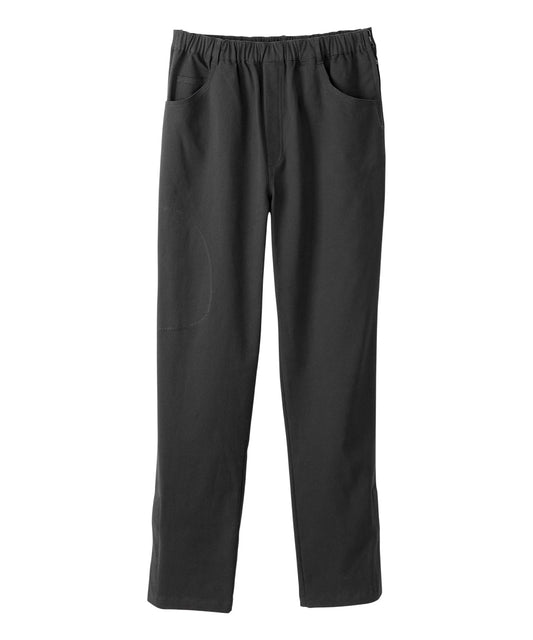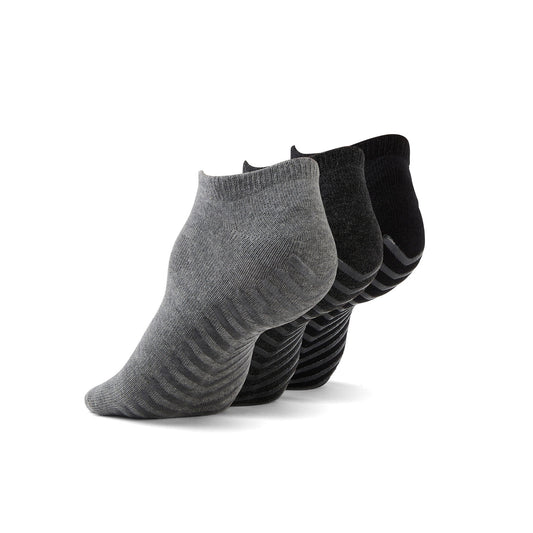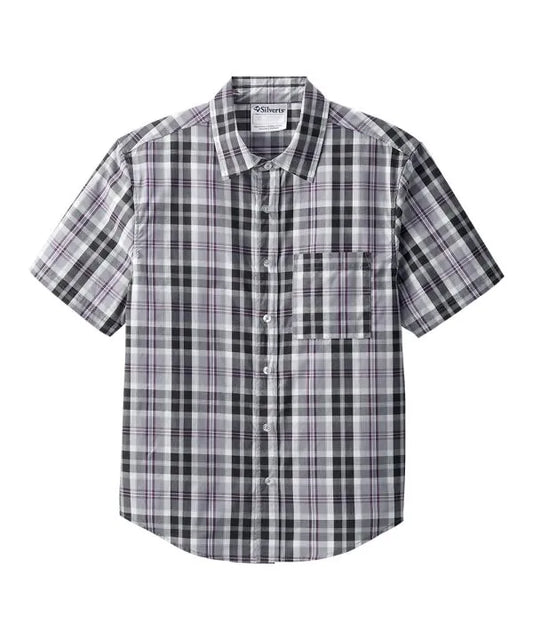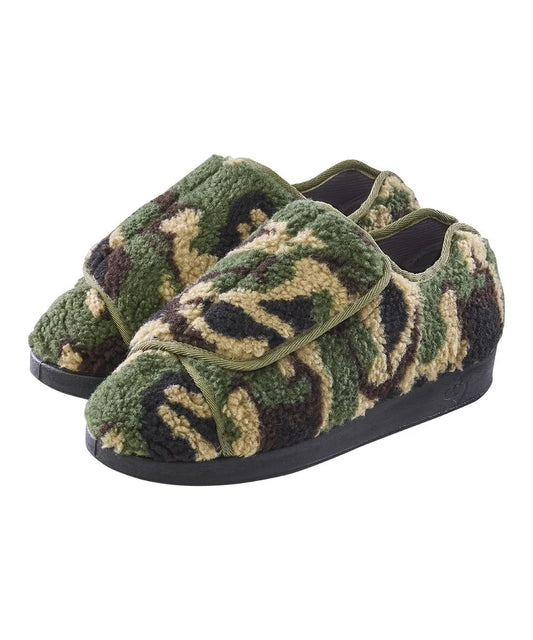Written by: Shreeya Shah
A Spinal Cord Injury (SCI) can completely change a person's world and how they approach daily life, foremost in dressing. The once straightforward task of getting dressed becomes increasingly complex due to limitations, comfort issues, and the need to maintain dignity in the process. Each article of clothing easily becomes a choice, one that can determine independence or entrapment. As the day unfolds, each moment of getting dressed becomes a thoughtful experience that requires physical inhibition to be considered like a puzzle. The wrong seam, closure, or waistband can feel like hours of discomfort. The wrong garment can even mean being unable to engage in daily activities.
Fortunately, adaptive fashion has expanded to help address these challenges. Designed from both functional and aesthetic qualities, this new genre of style demonstrates that accessible and stylish designs can complement one another. June Adaptive proudly leads the pack in appealing, accessible clothing with a curated collection of clothing that is commonplace and will serve a functional need. From comfortable everyday basics to dress designs for all occasions, each piece is made with consideration and with the intention of fulfilling the wearer with an understanding of needs that have perhaps been lost. It is about clothing, of course, but it is about restoring independence, restoring confidence, and the freedom to wear clothes that make you look and feel good.
However, the reasons for adaptive clothing stretch far beyond physical comfort. For people with SCIs, clothing can have a considerable effect on emotional health and self-expression. When developed thoughtfully, adaptive clothing can help increase confidence, reduce anxiety, and solidify a sense of identity. Feeling relaxed, stylish and empowered isn't just about having the best outfit - it is a requirement for mental well-being and quality of life. Consider the emotional impact of putting on your clothes for the first time independently after you have been injured. These little victories can feel like major emotional wins.
June Adaptive's mission is based on those beliefs. Comfort, dignity, and independence are the foundation of every design we make; one garment at a time, we are committed to changing lives. Details, such as the location of a seam or how a zipper will open, are all looked at with the end user in mind. What we have is an adaptive clothing company that has contemporary styling, a luxurious feel, and that will make the act of getting dressed a more positive and rewarding part of your daily routine.
In this blog, we will examine the fundamentals of dressing after a spinal cord injury: what elements to emphasize, and how to find outfits that are stylish yet functional, as well as where to purchase clothing that makes your journey easier. You may be exploring fashion after an SCI yourself or supporting a loved one, and we hope to share practical information and inspiration while reminding you that independence and style are always possible. Your clothing should never hold you back, and always help you move forward.
Key Features To Look For In Wheelchair-Friendly Clothing
Clothing made for the seated body is beneficial for any wheelchair user. At June Adaptive, all clothing pieces have to be made differently but with little changes that make a big difference in comfort, mobility and dignity. Most importantly, wheelchair users need to avoid pressure points that may create discomfort or pressure sores or pressure injuries. The "right" clothing must have seamless details, soft fabrics for the seated body, and tailoring that allows for seated motion.
Take the Men's Sherpa-Lined Jacket with Magnetic Fastening as an example.

It is designed to look like a standard flannel jacket but uses magnetic fasteners instead of buttons, which allow for increased ease of getting in and out of clothing. Or, think of the Unisex Super Soft, Anti-Slip Crew Socks. These stylish yet cozy socks are a perfect option for individuals who like non-slip solutions but don't want to sacrifice their comfort for looks.
 Moreover, our Women's Cozy Plush Shawl is an example of a garment that you can put on without worrying about complex fastenings. Our shawl simply drapes on your shoulders and is an excellent solution for people with minimal dexterity or fatigue when you need to layer for warmth. These items and others are part of a wider range of products designed to make the getting dressed process less stressful and more enjoyable.
Moreover, our Women's Cozy Plush Shawl is an example of a garment that you can put on without worrying about complex fastenings. Our shawl simply drapes on your shoulders and is an excellent solution for people with minimal dexterity or fatigue when you need to layer for warmth. These items and others are part of a wider range of products designed to make the getting dressed process less stressful and more enjoyable.

Here are the key features you should want to prioritize:
-
Magnetic or Velcro closures for ease of use
-
Tagless and seamless construction to avoid skin irritation
-
High back rises and seated-fit designs that stay comfortable all day
-
Stretchy, breathable fabrics that accommodate movement and reduce overheating
-
Side or open-back designs that assist with easier dressing and transfers
-
Reinforced seams and wider leg openings to aid with incontinence wear or medical devices
These features allow wearers to enjoy increased autonomy, whether dressing independently or with assistance. The goal? To help each feel more comfortable, capable, and confident in their daily lives. Because comfort isn’t just about softness—it’s about freedom of movement, efficiency, and reducing friction both literally and metaphorically.
Best Adaptive Pants For Seated Comfort
If you're spending extended time sitting, you can forget about traditional pants! The fit of traditional pants is awful as they ride down, twist, or dig into your waist when sitting or moving around. Gone are the days of making a choice between comfort and style. June Adaptive has solved that problem with their range of pants that emphasize both!
Take our Men's side zip pants for example, these pants are designed for those that have limited mobility with the full-length zipper on the side and the waistband has stretch, but most importantly, these pants allow for ease of dressing and anxiety-free bathroom visits! They also use soft yet durable fabric with a breathable property so that heat build-up is lessened over the long duration of sitting and comfort is maximized, while looking great!

If you're a woman, you have the Adaptive Lounge Pants, which give the same comfortable fit with the same heightened functionality. Lazy, comfy fit and soft-touch material - plus high-rise back for dignity and coverage. Elasticized waistband keeps you snug and anchored all day, but not pinned down - because that's a horrible feeling.
We also offer adaptive denim - with the style of denim, we can create adaptive functionality with denim. These jeans can replicate traditional denim with the same styles (straight fit, distressed, dark wash, extra stretchy), but with added features such as magnetic buttons and high-back pants.
No need to sacrifice style either, each pair is cut to resemble everyday trousers or loungewear. From the outside, they look just like standard pants, but their secret lies in the comfort-enhancing details that make all the difference.
How To Dress Independently With Limited Mobility
The emotional reward of being able to dress oneself is truly hard to measure; for those in wheelchairs or with limited mobility due to a spinal cord injury, adaptive clothing is a game-changer. June Adaptive has many items to help with independent dressing.
Consider our Men's Magnetic Closure Flannel Shirt: with hidden magnets located along the placket, this flannel shirt can be done up quickly, simply and conveniently using one hand. Similarly, the Women's Magnetic Zipper Active Jacket incorporates an innovative zipper that joins magnetically before you zip it all the way up, and it is a considerate design for those with lower dexterity. And because these designs are no different than standard jacket style, they allow you to have style without the sacrifice.
Tips to promote independent dressing include:
-
Lay out garments flat and face-up to reduce confusion and improve grip.
-
Use dressing aids like grabbers, hooks, or adaptive loops to reduce strain.
-
Opt for clothing with magnetic fasteners, elastic waists, or large pull tabs.
-
Minimize layering to keep movements simple and avoid overheating.
-
Choose wide-neck tops and oversized armholes for easier reach-through.
With the right clothing and technique, the previously dreaded experience transforms into a more empowered part of your day. And with some practice and tools in hand, once again, dressing can be a form of personal expression, not an obstacle.
Open-Back Vs. Side-Opening Designs: Which Is Better?
Adaptive clothing styles vary. The most common styles are open-back and side-opening. Each is designed for specific purposes and mobility requirements.
Open-back tops and gowns, including those in June Adaptive's caring collection, are intended for individuals who need assistance when getting dressed. Open-back designs typically include overlapping panels in the back, making it easier for caregivers to dress someone without movement of the arms or torso. Open-back styles are perfect for those with upper-body paralysis or individuals recovering after surgery.
Side-opening clothing is designed for individuals who prefer to dress themselves or require minimal assistance with dressing. Our Men's Side-Zip Pant or side-zip skirt designs allow the user to adjust their garment while seated or standing. Side openings are less intrusive, support dignity, and support independence.
In certain situations, a hybrid style provides the best option that combines an open back with side openings for versatile use depending on the day's activities.
Both open-back and side-opening styles support comfortable dressing options and independent living. In the end, the choice is personal to each individual's needs and lifestyle. And with all pieces from June Adaptive designed to look and feel like mainstream fashion, users will never feel like they are wearing adaptive clothing.
The Role of Caregivers in the Dressing Journey
Caregivers are frequently the unsung heroes of the recovery and daily living process after a spinal cord injury. Their involvement is not just beneficial; it's necessary. In many cases, caregivers fill different roles as they may be family members, friends, or trained attendants. They offer more than just the physical aspect; their support provides an emotional connection, encouragement and security. Getting dressed for many is an opportunity for trust, patience, and coordination. Everybody's care can include coordinating the fastening of a zipper on a jacket, helping to shift a pant leg, and even ensuring that casual attire doesn't rub on the skin. It's the smallest tasks that can be truly filled with compassion and thoughtfulness. At June Adaptive, we are appreciative of caregivers and work with them in mind. Our apparel is not only intended for the wearer's style or comfort, but it is also designed for the convenience, time savings and dignity of the caregiver. When we foster a supportive environment for caregivers, we empower everyone involved. Caregivers are not secondary, and they are not ever optional. Caregivers are foundational.
Where To Buy Stylish Yet Functional Adaptive Outfits
Finding clothing that is both functional and fashionable can sometimes be challenging. Not at June Adaptive! Our online store is filled with clothing essentials and seasonal pieces that are curated specifically for people with access and mobility challenges. We partner with occupational therapists, caregivers, and people with lived experience to consult on every single design.
Some standout pieces to explore include:
-
Men's Sherpa-Lined Jacket with Magnetic Closures: A customer favourite for warmth and ease of wear.
-
Women's Magnetic Zipper Active Jacket: Functional, stylish, and perfect for active lifestyles or recovery periods.
-
Unisex Ultra-Soft Anti-Slip Crew Socks (4-pack): Non-slip soles, cozy fabric, and stylish patterns.
These aren’t just clothes. They’re tools for building independence, reducing dressing time, and feeling good. With easy navigation, product videos, and detailed descriptions, shopping at JuneAdaptive.com is designed to be as seamless as the clothing itself.
Explore the diverse range of adaptive clothing at JuneAdaptive.com, where thoughtful design meets everyday ease. To read more posts like this and receive updates, sign up below for the June Adaptive newsletter.















